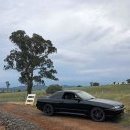FLUTTER sound as BOV
Announcements
-
Similar Content
-
Latest Posts
-
Sad part is many issues only became apparent once I had the car and started looking real close. And if the turbo hadn't oiled on my exhaust I might not even have noticed the crack. If I were to (honestly) sell this car, with the current issues it has I'd lose a ton of money. Might as well invest into the car instead.
-
Yeah but even that repair will take time and I wouldn't trust that block enough to put a full rebuild into it just for it to fail sometime again. So I think I will just mend it from the outside and drive it until I can get a new engine in the car. We'll see
-
Also have an Greddy Trust Oil Pump in new, unused condition $1000 ONO
-
Yeah from what i read this couple of days about BoV i thought so too that atmo BoV would be "worse" in my case. And yes i think/hope that on stock boost it should be ok. I dont want "no BoV" but that is just what i get. Will sort it this out later. I drive it kinda gently even in N/A state so you bet your *ss i will be even more carefull with turbo...and of course still having the old box(but that is getting sorted) I thought that would be good to have at least Nistune. But i dont know what "tune" if any is there. Car(engine from that car) is running stock right now. Yeah for me i think that Nistune should be enough :-) Oh i dont know that. And what outlet you mean? The one that goes to the J-pipe or that "big" one that vents to the atmo? If iam understanding this right you mean that circle one? So i have "booth worlds" like blocked but vented enough? Does this not make car/engine more confused? 😄
-






Recommended Posts